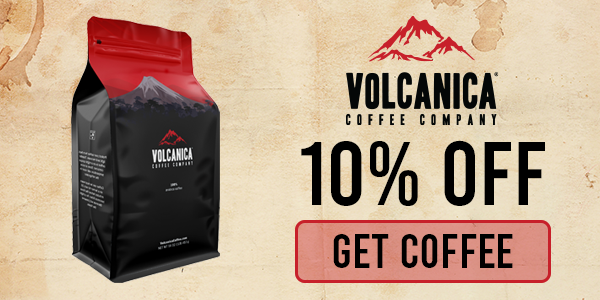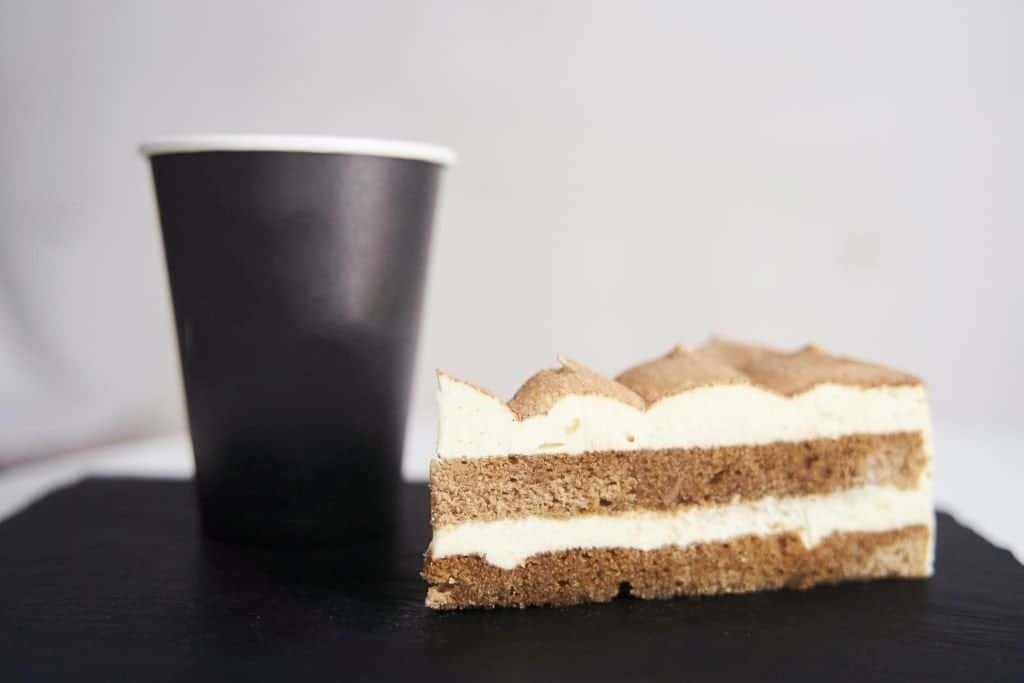Coffee aficionados know that a rich, full-bodied cup of coffee is the ultimate way to start the day or fuel a productive afternoon. While some prefer a lighter, smoother coffee experience, others crave that thick, bold flavor that lingers on the palate.
If you’re among the latter, you’re in the right place. In this article, we’ll explore how to make coffee thicker, delving into the factors that influence coffee thickness and the techniques you can use to achieve the perfect cup.
From selecting the right beans and roast to experimenting with brewing methods, we’ll guide you through the process of transforming your coffee experience at home.
So grab your favorite mug, and let’s get started on the journey to a more satisfying, robust brew.
Key Takeaway 💭
Making coffee thicker and more satisfying involves a combination of factors, including selecting the right beans and roast, perfecting the grind size, adjusting the water-to-coffee ratio, and experimenting with brewing methods and additives.
By understanding and optimizing each of these factors, you can elevate your coffee experience and enjoy a rich, full-bodied cup that aligns with your taste preferences. Remember, the key to success is experimentation and finding the perfect balance that suits your unique palate.
Understanding coffee thickness
Understanding coffee thickness is crucial for those seeking a richer, more satisfying coffee experience. In essence, coffee thickness refers to the concentration of dissolved solids and oils in a brewed cup, which contributes to the overall body, mouthfeel, and flavor intensity.
Several factors play a role in determining the thickness of your coffee, including bean type, roast level, grind size, brewing method, and water-to-coffee ratio.
Each of these factors influences the extraction process, which is responsible for drawing out the coffee’s flavors, oils, and compounds. To make coffee thicker, it’s essential to strike a balance among these variables, allowing you to achieve the perfect extraction that results in a bolder, more full-bodied cup. In the following sections, we’ll dive deeper into each of these factors and offer guidance on how to optimize them for a thicker, more satisfying brew.
Choose the Right Coffee Beans
Choosing the right coffee beans is a fundamental step in crafting a thicker, more robust brew. When it comes to bean selection, the roast level and origin of the beans can make a significant difference in the final cup.
Bean type
Dark roast beans, such as French or Italian roast, typically result in a bolder, more intense flavor with a thicker mouthfeel, making them an excellent choice for those seeking a richer coffee experience. Additionally, the choice between single-origin and blended beans can impact the thickness and complexity of your brew.
Single-origin beans, sourced from a specific region, showcase unique flavor profiles and characteristics of that area. In contrast, blended beans combine beans from multiple origins, creating a harmonious balance of flavors and potentially contributing to a more complex, full-bodied cup.

Storage
Proper coffee bean storage is equally important in preserving the freshness and quality of your beans, which ultimately affects the thickness and flavor of your coffee.
To maintain the beans’ integrity, store them in an airtight container in a cool, dry, and dark place, away from heat, light, and moisture. This will ensure that your beans retain their essential oils and flavor compounds, allowing you to enjoy a thicker, more satisfying brew every time you grind and brew your coffee.
- Freshness is Everything – Our coffee canisters help maintain the freshness of your coffee beans by keeping air out and free of harmful oxidation with a one-way CO2 valve and 100% BPA-free silicone…
- Date Tracker & Free Scoop – Ensure your coffee is always fresh and not expired. You can set the storage or expiry dates with the date tracker on the lid of your Veken coffee storage canister. We also…
- 304 Stainless Steel – As a coffee lover, you must never compromise on the material and quality of your coffee container. Veken containers are made of thick, high quality stainless steel to create a…
Brewing Methods
Selecting the right brewing method plays a pivotal role in determining the thickness and overall quality of your coffee.
Different brewing methods extract coffee compounds in varying degrees, affecting the concentration of dissolved solids and oils in the final cup. For a thicker, more full-bodied coffee, consider using a French press, espresso machine, or Moka pot.
The French press, a popular choice among coffee enthusiasts, allows for full immersion brewing and preserves the coffee’s natural oils, contributing to a richer, more robust brew.
Espresso machines, on the other hand, use high pressure to force hot water through finely-ground coffee, resulting in a concentrated shot with a thick, velvety crema.
The Moka pot, a stovetop espresso maker, brews coffee by passing pressurized water through a bed of ground coffee, creating a strong, bold cup with a thicker consistency.
By experimenting with these brewing methods and understanding their unique extraction processes, you can find the one that best suits your preferences and helps you achieve the desired thickness in your coffee.
Perfecting the grind size
Perfecting the grind size is an essential aspect of achieving your desired coffee thickness, as it directly impacts the extraction process. The relationship between grind size and extraction is simple: the finer the grind, the more surface area is exposed, allowing for greater extraction of flavors, oils, and compounds that contribute to the coffee’s thickness.
For thicker coffee, consider using finer grind sizes, such as those suitable for espresso or fine drip brewing. An espresso grind works best with espresso machines, as the fine particles provide the necessary resistance for high-pressure water to extract a concentrated, thick shot with a rich crema.
A fine drip grind, on the other hand, pairs well with brewing methods like the Moka pot or AeroPress, where the increased surface area encourages a fuller extraction, resulting in a bolder, more robust cup.
To ensure consistent results, invest in a quality burr grinder that offers precise grind size adjustments. This allows you to experiment with different grind sizes, refining your coffee brewing process to create the perfect balance of extraction and thickness for your taste preferences.
Adjusting the water-to-coffee ratio
Adjusting the water-to-coffee ratio is a crucial factor in achieving your desired coffee thickness. This ratio determines the concentration of dissolved solids and oils in your brewed coffee, directly impacting its body, mouthfeel, and flavor intensity.
A higher coffee-to-water ratio results in a thicker, more robust brew, while a lower ratio yields a lighter, more diluted cup.
To create a thicker coffee, consider using more coffee grounds per unit of water. For example, you might start with a 1:15 ratio (1 part coffee to 15 parts water) and gradually adjust to a 1:12 or even a 1:10 ratio, depending on your taste preferences. It is essential to measure your coffee and water accurately, using a digital scale for consistency.
Keep in mind that the ideal ratio may vary depending on the brewing method, bean type, and roast level, so don’t be afraid to experiment until you find the perfect balance that delivers the desired thickness and flavor in your coffee.
Experimenting with additives
Experimenting with additives is another way to enhance the thickness and depth of your coffee, adding new dimensions to your brew. Coffee-enhancing additives, such as chicory or cocoa powder, can contribute to a thicker, more complex flavor profile.
Chicory, a common addition in New Orleans-style coffee, imparts a natural bitterness that complements the coffee’s richness, while cocoa powder adds a subtle chocolatey undertone, creating a fuller-bodied cup. Creamers and thickeners can also help achieve a thicker mouthfeel. Heavy cream, for instance, adds a luxurious creaminess that accentuates the coffee’s body, while non-dairy alternatives like almond milk or oat milk can provide a similar effect, depending on their consistency.
As you explore these additives, remember that personal preferences play a significant role in finding the ideal combination. Don’t be afraid to experiment with different ingredients and ratios to discover the perfect blend that elevates your coffee experience and delivers the thickness you desire.
- Coffee Flavor Variety Pack: Perfect for making your own flavored lattes, mochas, cappuccinos and more, this variety pack includes 1 bottle of each: Caramel, French Vanilla, Vanilla and Hazelnut
- Flavoring Syrups: Made with pure cane sugar, natural flavors and cold-filtered water, Torani Original Syrups provide gold-standard flavors and vibrant colors to create amazing drink experiences
- Authentic Coffeehouse Flavor: From caramel to French vanilla to hazelnut—and everything in between—our syrups and sauces are here to help you create tantalizing lattes, cappuccinos, cold brews and…
Wrapping Things Up
In conclusion, crafting a thicker, more satisfying cup of coffee requires a thoughtful approach that takes into account the various factors that influence coffee thickness. From selecting the right beans and roast to perfecting the grind size, adjusting the water-to-coffee ratio, and experimenting with brewing methods and additives, each step plays a crucial role in determining the final outcome.
As you embark on this journey to create a richer, bolder brew, remember that personal preferences play a significant part in the process, and the key to success lies in experimentation and finding the perfect balance that suits your taste buds.
With a little patience, practice, and a willingness to explore new techniques and flavors, you’ll be well on your way to enjoying the ultimate coffee experience—a thick, full-bodied cup that invigorates your senses and elevates your daily coffee ritual.






